Colombia continues to excite mining investors and exploration geologists alike. With over 41 million oz. of gold identified so far, 2011 promises to be a landmark year for this country’s reemergence as a serious gold destination, as various companies advance to resource definition and scoping study stages, and new arrivals kick off exploration programs.
The number of drill rigs in Colombia has increased from a dozen to around 70 in the last 18 months, estimates Steve Mundle, president of Logan Drilling, with “big projects of 10,000-40,000 metres, and companies drilling 3,000-8,000 metres at grassroots projects, which is sizable,” he says.
Mundle attributes this to Colombia’s wonderful geology: “Grassroots drilling in the Canadian Shield is like trying to find a needle in a haystack. In Colombia there is a much higher chance of success.” (See table, page C8, for a tally of recent gold discoveries.)
The California gold district in Santander department is perhaps Colombia’s most famous in modern times as it hosts the La Bodega and Angostura gold projects, and is estimated to contain at least 30 million oz. gold. Ventana Gold‘s (VEN-T) 3.5-million-oz. gold La Bodega project has been a headline grabber due to the company’s dramatic share price appreciation, and more recently, a hostile-turned-friendly cash offer of $13.06 per share from Brazil’s EBX Group that values the company at $1.5 billion. Ventana’s November 2010 scoping study outlined a production scenario of 301,000 oz. gold per year for the first six years.
Consolidation in the California district remains a possibility. Galway Resources‘ (GWY-V, GWYRF-O) California project is southwest along strike of La Bodega and includes concession fractions within its main mineralized structure. After a frustrating start to drilling, Galway has finally got momentum going and is posting interesting results, however, its stock has failed to sparkle and it could add consolidation resources to La Bodega at, a relatively low cost.
Northeast of La Bodega is Greystar Resources‘ (GSL-T, GSL-L) Angostura project from which it hopes to produce annually 511,000 oz. gold and 2.3 million oz. silver over a 15-year mine life. However, the company has to wait until March to learn if the government will accept its mine plan in the face of environmental opposition (see related article, page B1).
The nearby Vetas district has attracted two newcomers, privately held Calvista and CB Gold (CBJ-V). Galway also has a project in the centre of the Vetas district that includes the Reina de Oro and Coloro properties, and the El Volcan mine. CB Gold has performed initial exploration and reported geochemical sampling results of up to 667 grams gold per tonne and 3,090 grams silver per tonne. We can expect a lot more to come from this district.
Middle Cauca gold belt
Most exploration activity has focused on the Middle Cauca belt. AngloGold Ashanti‘s (AU-N) 12.9-million-oz. gold La Colosa discovery showed that Colombia hosts world-class gold deposits.
AngloGold is contemplating building a US$3-billion mine, but has been stymied by permitting issues. The company is now trucking in water and pumping it to site to continue exploration. It’s expensive but worthwhile, as infill drilling and new drilling are believed to have increased the resource to 20 million oz. gold.
“We will obtain clarity about grade and extent over the next 18 months to produce an updated resource statement,” says AngloGold general manager Rafael Herz. “The expectation is of having more resource than at present, but we are far from confirming this.”
Through prefeasibility and feasibility AngloGold will spend US$220 million over the next three years on La Colosa, and US$110 million in 2011 on all projects in the country.
B2Gold (BTO-T) has been another La Colosa casualty, as AngloGold took operating control of their 2.39-million-oz. gold Gramalote joint-venture project. Gramalote has a 2011 prefeasibility and exploration budget of US$30 million to fund 15,000 metres of drilling, engineering studies and prefeasibility work. AngloGold also took control of the Quebradona JV with B2Gold, and drilling should start in February.
Up north, Medoro Resources (MRS-T) unified the Zona Alta, Zona Baja and Echandia parts of the historic Marmato district in Caldas state, and released a consolidated resource estimate of 6.6 million oz. gold in the measured and indicated categories plus 3.2 million oz. gold in the inferred. In addition, Medoro has an estimated 59 million oz. silver in all categories.
This consolidation in the district was an “important step forward in the company’s plan to develop a large-scale, bulk-tonnage gold mine,” says Serafino Iacono, Medoro’s interim CEO. Drilling to expand the resource continues, as do efforts to close down polluting artisanal mills and relocate the town.
The Marmato district is being tested by several juniors. Mercer Gold (MRGP-O) intercepted two mineralized zones at Guayabales with results of up to 2.42 grams gold over 2 metres and 1,333 grams silver over 1 metre in early drilling. Seafield Resources‘ (SFF-V) stock leapt following the release of a 449-metre intersection grading 1.29 grams gold in December 2010 from the Miraflores gold-bearing breccia at its Quinchia project in Risaralda state.
Seafield’s Quinchia neighbour is Batero Gold (BAT-V, BELDF-O), which is exploring three porphyry centres: La Cumbre, Manzanillo-Mandeval and Dos Quebradas. Drilling at La Cumbre returned 452 metres at 0.60 gram gold and 0.12% copper in January.
Titiribi
Farther north in Antioquia state, Sunward Resources (SWD-V, SNWRF) has defined a resource of 3.7 million oz. gold and 460,000 tonnes copper at its Titiribi project. Over 36,000 metres of drilling have been completed and mineralization remains open in all directions. Sunward also has a copper-gold porphyry prospect called Murindo in Choco department that has returned samples of 0.94% copper and 0.39 gram gold over a 1,400-metre by 800-metre area. Titiribi is an historic mining district that includes the Zancudo mine restarted by Gran Colombia Gold (GCM-T) that will produce an initial 10,000 oz. gold per year.
Near Titiribi, Colombian Mines (CMJ-V, CMBPF-O) is drilling Yarumalito with results including 95.5 metres at 0.70 gram gold, which confirms and expands near-surface porphyry and porphyry-related mineralization in its La Escuela and Balastreras targets. The company believes it has a single large porphyry system about 2.5 km long in an east-west direction with a variable width averaging 1.4 km. Bellhaven Copper & Gold (BHV-V, BHVCF-O) will start a drill program in 2011 at its nearby La Mina gold-copper porphyry project that has yielded multiple samples of 1 gram gold or better. The company also has a 1.5 km by 0.5 km magnetic anomaly to test that contains elevated gold-copper values in rock-chip and soil samples.
Towards the head of the belt is Continental Gold‘s (CNL-T) Buritica project, increasingly looking as though it will be Colombia’s first modern gold mine. Following its initial public offering (IPO) in April 2010, the company was one of the most successful stocks in 2010 as it expanded the project’s resource potential.
Internal resource estimates have increased from 1-2 million oz. gold to 2-5 million oz. gold, and a huge 65,000-metre drill program should enable the company to release an initial resource estimate before the second quarter.
“We are advancing the internal mine design studies and technical studies that will be the basis of a prefeasibility study,” says Continental president and CEO Ari Sussman. “The economics will be robust, and once the mine construction
decision is made we hope to start production
in 2014.” Sussman anticipates the mine will operate at 1,200-1,500 tonnes per day and exploit ore grading 20 grams gold
per tonne, resulting in output of 200,000-300,000 oz. gold per year.
Continental is also excited about its Berlin and Dominical projects. At Berlin it will drill 10,000 metres starting in the second quarter, targeting a 3-km area around the former mine. “We have modeled its old sampling database and it showed wonderful high grade samples in areas never in production,” Sussman continues. Some 5,000 metres will also be drilled at Dominical on vein targets.
Other companies with projects in the Middle Cauca belt to watch include: AuRo Resources (ARU-V), with its El Tesoro project: privately held Solvista Gold, Caramanta project; Universal Gold Mining (UGDM-O), Toldafaria; Bandera Gold, Belmira; and Colombia Crest Gold (CLB-V) (formerly Eaglecrest Explorations), Fredonia.
Solvista Gold expects to list on the TSX Venture Exchange by the end of April and has raised US$10-US$15 million, sufficient to drill and test Caramanata and its Guadalupe project in the Antioquia batholith. “Drilling will start in the second half of 2011 on targets we identified with airborne geophysics and sampling,” says exploration head Miller O’Prey.
While Antioquia Gold‘s (AGD-V) Cisneros project in the Antioquia batholith has yet to excite the market, drilling will restart promptly and work will begin on its Betulia-Concordia project, part of 320 sq. km it picked up from Barrick Gold (ABX-T, ABX-N) in 2010.
Segovia gold belt
Eastern Antioquia hosts the Segovia gold belt, which is home to Frontino, Colombia’s longest operating mine.
Gran Colombia Gold obtained the assets of Frontino Gold Mines, having paid US$200 million that was used to resolve a pension liability issue. Gran Colombia plans to increase production to 100,000 oz. gold per year by the fourth quarter and on to 150,000 oz. per year within a few years. The company is also exploring other zones to the south at its Segovia and Concepcion projects.
“Change – that is the message that we are trying to get across,” says Gran Colombia’s COO Jose Oro. “Gran Colombia is all about change and modernization.”
Other companies active in the Segovia gold belt include Touchstone Gold Holdings that is hoping to release an initial National Instrument 43-101 compliant resource statement on its Rio Pescado project, and complete a reverse takeover with a listed Canadian company before the end of June.
“We are funded for the year, have three rigs on site and will be drilling for the rest of the year,” says Touchstone CEO Colin Andrew, who describes Rio Pescado as not a mesothermal vein, but rather as several near-surface, sub-horizontal lenticular quartz masses of up to 25 metres true thickness with gold bodies hosted in Jurassic granodiorites and diorites possibly related to Cretaceous intrusives.
New areas
Antioquia, the Middle Cauca belt and Santander are well staked and it is increasingly expensive to pick up projects there, so juniors are turning to more far-flung corners of Colombia, and Bolivar, Narino and Choco states are increasingly in play as security improves.
“Narino and Cauca are the entry point of the Andes into Colombia and we feel that there should be interesting projects there,” says AngloGold’s Herz.
Gran Colombia Gold has started drilling its Mazamorro project in Narino state, and Quia Resources (QIA-V), the first Colombia-related IPO of the year, is preparing to drill its San Lucas property in the Guanaco gold belt of Bolivar state. Quia will start an initial 5,000-metre drill program this quarter to test high-grade and disseminated targets.
“It is a fantastic project,” says Quia’s vice-president of exploration Iain Kelso. “Southern Bolivar is recognized as having a lot of potential.”
Other companies that have acquired projects in Colombia and are starting exploration work include: Minatura Gold (MGOL-O), and its Anori and Alcaran projects; Caerus Resource (CA-V, CAEUF-O), El Cafetal project; Miranda Gold (MAD-V, MRDDF-O), Pavo Real; Rugby Mining (7RM-F), Comita; Orofino Gold (ORFG-O), Senderos de Oro; and Arcturus Ventures (AZN-V), Nus.
With so much activity, Colombia promises to be the source of much gold related news in 2011.
– Based in Medellin, the author is a freelance reporter specializing in mining issues, and can be reached at paul.corresponsal@gmail.com.

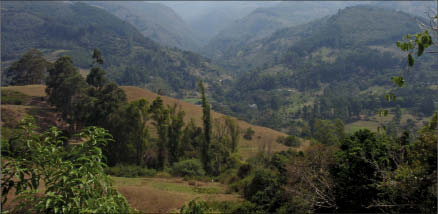
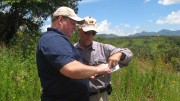
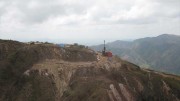
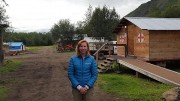
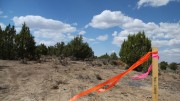
Be the first to comment on "Colombia’s gold rush kicks into high gear"